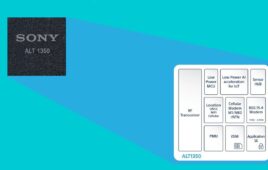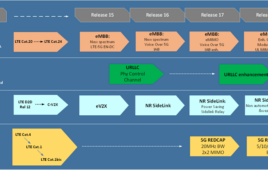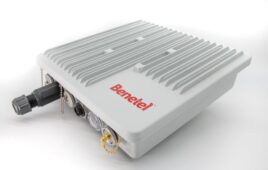More than two and a half years ago, Internet giant Google purchased a small company that few people had heard of and even fewer knew what it did. That company was Android, whose co-founders included a number of Silicon Valley veterans whose dream came to light last year in a very big way.
Everyone in the wireless telecommunications industry knows about Android now, after Google brought it out into the open last November along with a global list of nearly three dozen companies that would like to see Android change the way the mobile Internet has been done on handsets. The companies aligned under the Open Handset Alliance (OHA) to back the emergence and use of the Android platform on mobile devices.
Android’s potential promises openness and innovation, perhaps changing not only the mobile Internet but the Internet itself. Because of that, Wireless Week selected the OHA and Android for special recognition in the Emerging Technologies category in its annual Excellence Awards program.
Some analysts think Android and the OHA could be a “game changer” in the wireless industry because the Linux-based platform will be open to any developer for any application. Handset manufacturers also can use Android without paying license fees. The OHA members also promise to optimize their latest technical capabilities for handsets running the platform.
Today’s smartphones run on several different operating systems, most of which are based on proprietary technology even though they may be open to a certain extent to developers. On the opposite side of Android’s world has been Apple’s iPhone, which was completely closed until its recent introduction of a software developer’s kit (SDK).
Throw Open the Gates
The OHA and Android are throwing the gates open with the philosophical stance that openness is what created the modern Internet and it can do the same for the wireless Internet, according to Rich Miner, one of Android’s co-founders and now group manager of Google Mobile Platforms.
“We believe there is pent-up interest in a truly open platform in mobile,” Miner says.
He says carriers are free to lock-down Android phones so they can’t be used on any other network (except by hackers), but that the initial source code for the handsets will be open. He thinks there is enough impetus in the wireless industry now behind openness that there will be unlocked Android handsets at some time.
“They don’t have to lock down a device to have a business case,” Miner says.
The first Android handsets are expected to be available commercially in the second half of 2008, but Miner says it will be late 2009 or 2010 before there are a large number of models. “I see no reason why in 2010 there won’t be hundreds of models of phones sold in every corner of the world,” he says.
One of the handset manufacturers making Android phones will be HTC, which already has a prototype device some developers are using to develop applications. The prototype’s appearance is similar to the T-Mobile Dash, which HTC makes, but that doesn’t mean that’s what the commercial Android devices will look like, says Jason MacKenzie, HTC’s North American vice president.
The Android phone will be the first handset HTC has made that doesn’t use Microsoft Windows Mobile, a platform the OEM will continue to support. MacKenzie says HTC wanted to expand it portfolio and that Android will allow the company to reach a whole new set of users. Android’s audience will be primarily the consumer, while Windows devices skew toward the mobile professional.
A Game Changer
Even though the Android phones will be open, they still will be certified at several levels, including an OHA process and the standard carrier certification, MacKenzie says.
“We’re not going to put out a half-baked product,” he insists, adding that HTC is committed to having at least one device in the market by the end of the year.
Will Android be a game-changer? MacKenzie thinks it can because of its openness, its support from Google and what that can mean for applications, and because the developer community will have a big opportunity to innovate.
“Ultimately, the consumer will vote,” he says, “but the platform is truly open so anything is possible.”
Operator members of the OHA include T-Mobile, Sprint Nextel, China Mobile, NTT DoCoMo, KDDI, Telecom Italia and Telefónica. Cole Brodman, T-Mobile USA’s chief development officer, says the operator joined the coalition because it wanted to help spur innovation in the development of applications and services and saw Android as the most open platform available.
Direct to Consumer
Android will mean T-Mobile can develop its own ideas and take them directly to the consumer without having to go through any approval by a handset OEM or handset operating system owner, Brodman says. He says T-Mobile USA has had difficulty in the past deploying its MyFaves applications on handsets using different operating systems.
The open platform also will benefit everyone in the industry because of the development opportunities and the ability to gain economies of scale.
Also, he says, Google has gained considerable insight into consumer behavior on the Internet which can be used to improve the mobile Internet.
T-Mobile USA has no problem with consumers using unlocked phones on its network as long as they have passed certification, although most consumers like to buy a phone at the lower, subsidized price. Handsets bought through the carrier also have been optimized for use with T-Mobile’s services. Brodman says the carrier hasn’t decided how Android phones will be sold but they likely will be sold on a subsidized and optimized basis.
T-Mobile USA is preparing to commercially launch its 3G network, starting in the New York City area, and Android phones will be able to take advantage of the improved data rates. But Brodman says Android isn’t necessarily tied to 3G because its services can run over an GSM/EDGE network.
Brodman believes Android phones will provide a “great” mobile Internet experience and that they could spawn a new wave of Internet community applications. He thinks the devices could lead to more user-generated content being shared across the network.
The ability to use Internet applications and services on a mobile device in an unfiltered way could change the way the Internet is used, Brodman thinks.
Defragmenting
Leading chip manufacturers joined the OHA so they could make sure their chips are optimized to run the Android platform, says Sy Choudhury, product manager for Qualcomm’s open operating system activities. Qualcomm, which did the same thing for Windows Mobile, integrates with the OS at the systems level.
Android will bring the connected desktop experience to the mobile handset in a seamless way, Choudhury says. One of the applications Qualcomm sees as compelling will be the ability to use location tagging on the handset for photos or to communicate to friends where you are. Another will be the easy ability to share photos, video and other content among users across platforms. Most of these applications will be most useful over a 3G network.
Choudhury also thinks Android will enable the vision of mobile Linux, which he says has been so fragmented that it isn’t useful. Android will defragment mobile Linux and encourage the developer community to use it to get into mobile applications, he says.
“It’s already defragmenting Linux,” he says. “We’re seeing tremendous interest, even for non-connected uses. There are a large number of companies investing in it.”
Google’s Miner also thinks Android will bring about a coalescing of handset OEMs around one or two versions of mobile Linux. It also will bring new applications to consumers more quickly than other smartphone operating systems, he says. He relates the difficulty he had when he was a vice president for the carrier Orange. He says Orange wanted to launch a push-to-talk service but it took 18 months to enable the handset platform. That kind of delay shouldn’t be a factor with Android handsets.
There has been some skepticism that Android can’t fulfill its promise of cheaper smartphones, but Miner is confident it will. The initial handsets may cost more than a typical feature phone, but the advantage that Android brings is that the OS will be free to handset OEMs. “That’s easily $20 worth of software, which can mean $60 for the end user,” he says.
He expects Android phones to reach feature phone prices sometime in 2009, meaning less than $100.
Will Android phones be tied to Google’s applications, making them the Gphone everyone talked about last year? Miner says there is no requirement that OEMs and carriers use Google applications on the handsets, although the initial models likely will use them.
One of the things that has Miner excited about Android’s future is what he sees at some universities, where classes are being taught on how to develop on the platform. Miner helped teach one of those classes recently at MIT. He thinks those students, like the ones who started learning the Web’s HTML code more than a decade ago, will bring the future of the mobile Internet.
Or, as its name implies, Android will become a mobile robot doing jobs for its human users.




